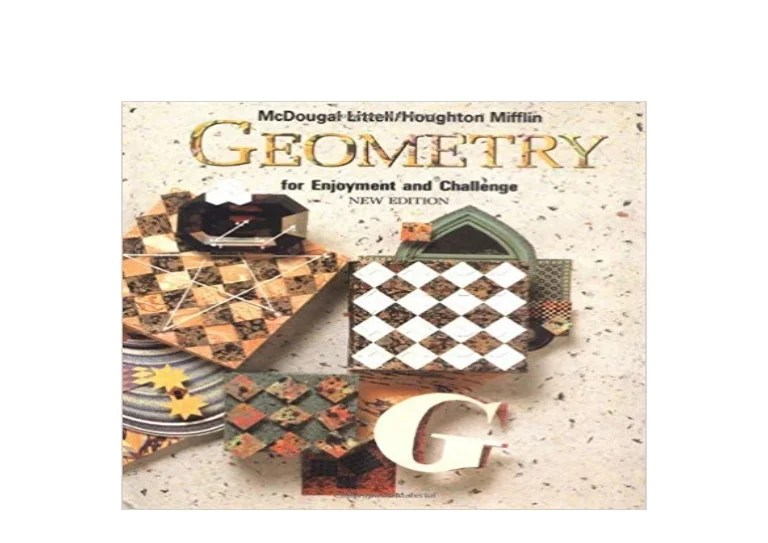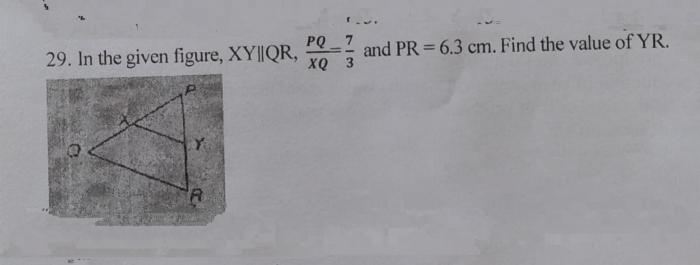Geometry for enjoyment and challenge answers, this comprehensive guide delves into the captivating world of geometry, exploring its historical evolution, cognitive benefits, diverse teaching approaches, effective assessment techniques, and a wealth of supporting resources. Immerse yourself in the fascinating journey of shapes, angles, and spatial relationships, discovering the joy and intellectual stimulation that geometry offers.
1. Geometry for Enjoyment and Challenge: Geometry For Enjoyment And Challenge Answers
Geometry has a rich historical context, dating back to ancient civilizations. In its early forms, geometry was used for practical purposes such as land surveying and construction. Over time, it evolved into a more abstract discipline, studied for its own sake and for its applications in other fields.
Today, geometry is both enjoyable and challenging, appealing to different learning styles and interests. It provides opportunities for students to develop their problem-solving skills, spatial reasoning, and critical thinking. Geometry is also a beautiful subject, with its elegant theorems and intricate patterns.
Historical Examples of Geometry
- The ancient Egyptians used geometry to design and build pyramids and other structures.
- The ancient Greeks developed a sophisticated system of geometry, which was used by mathematicians such as Euclid and Archimedes.
- Islamic mathematicians made significant contributions to geometry, including the development of trigonometry.
2. The Benefits of Studying Geometry
Cognitive Benefits
- Improved problem-solving skills
- Enhanced spatial reasoning
- Increased critical thinking skills
- Fostered creativity and imagination
Practical Benefits
- Applications in engineering, architecture, and design
- Understanding of the world around us
- Preparation for STEM careers
3. Different Approaches to Teaching Geometry
Traditional Approach
The traditional approach to teaching geometry emphasizes memorization of facts and formulas. Students are expected to learn a set of rules and then apply them to solve problems.
Modern Approach
The modern approach to teaching geometry emphasizes understanding concepts and developing problem-solving skills. Students are encouraged to explore geometry through hands-on activities and visual aids.
Best Practices for Differentiation
To meet the needs of diverse learners, it is important to differentiate instruction in geometry classrooms. This can be done by providing students with different levels of support, such as scaffolding, visual aids, and manipulatives.
4. Assessment in Geometry
Methods of Assessment, Geometry for enjoyment and challenge answers
| Formative Assessment | Summative Assessment |
|---|---|
| Quizzes | Tests |
| Homework assignments | Projects |
| Class participation | Portfolios |
Importance of Variety
It is important to use a variety of assessment techniques to evaluate student understanding and provide feedback. This helps to ensure that students are able to demonstrate their learning in different ways.
5. Resources for Geometry

Online Resources
- Khan Academy
- Geometry for Dummies
- Brilliant
Books
- Geometry for Enjoyment and Challenge
- Euclid’s Elements
- Trigonometry for Dummies
Tips for Use
- Use online resources to supplement classroom instruction.
- Encourage students to use books to explore geometry in more depth.
- Provide students with access to manipulatives and other hands-on materials.
Commonly Asked Questions
What is the historical significance of geometry?
Geometry has a rich history dating back to ancient civilizations, with significant contributions from Greek mathematicians such as Euclid and Pythagoras. It played a crucial role in the development of architecture, navigation, and astronomy.
How can geometry be both enjoyable and challenging?
Geometry offers a unique blend of visual appeal, logical reasoning, and problem-solving, making it both enjoyable and challenging. Its hands-on activities, puzzles, and real-world applications engage learners while fostering critical thinking skills.
What are the benefits of studying geometry?
Geometry enhances spatial reasoning, problem-solving abilities, and critical thinking skills. It strengthens creativity, imagination, and provides a solid foundation for STEM fields, such as engineering, architecture, and design.

